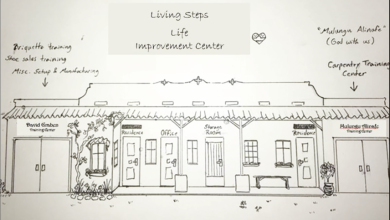Dan’s Shoe Repair ~ Boots & Shoes: A recap of 2013
Foot facts:
1) 3 out of 4 Americans experience serious foot problems in their lifetime.
2) Only a small part of the population is born with foot problems. It is neglect and a lack of awareness of proper care – including ill fitting shoes – that brings on problems.
3) Women have about four times as many foot problems as men.
There are 1.2 billion pairs of shoes sold in the U.S. each year by approximately 200,000 shoe sales people employed in more than 50,000 shoe stores and departments. However, estimates reflect only 25% of consumers can actually remember the last time they had their feet measured.
Don’t be afraid to ask questions.
Most shoe repair professionals are perfectly content to answer questions and help you understand what is needed for your shoes. There are good informative websites such as: www.SSIA.info (Shoe Service Institute of America).
When they are brand new, bring them in to the repair shop.
Many of the shoes you buy, and love, aren’t made in the best manner. Preventive care and alterations can do wonders. Thinner soles will soon wear and damage the uppers. Proactively add thin rubber protective soles, they will add just enough thickness to protect the upper and they help the shoes become anti-slip.
Water/stainproof your items before you use them. Many items are ruined on their first outing. Smooth leather shoes should be kept shined and polished to protect the leather from the elements.
What about good shoes?
What makes up a quality shoe? A quality shoe is quite often handmade or at least very well designed and the manufacturing quality control is stringent. Quality footwear is also made from the best material available. Typically it is made of mostly leather, but even then leather can come in variety of qualities and thicknesses. Do you think traditional golf shoes have gone the way of the Dodo? Not so, traditional golf shoes, with leather soles, and replaceable modern plastic spikes are available as custom shoes, in an incredible variety of styles and colors.
Service in the footwear industry has almost disappeared. Some consumers manage to purchase shoes with minimal assistance. The majority of people, however, pay the price for the lack of professional responsibility and service in the industry. The price can be foot/ankle discomfort, discomfort in other parts of the body due to shoes “fighting their feet.” You can pay a little more now, for well-fitted, good looking, supportive shoes or pay the price later in discomfort or possible disfigurement. If you are paying $75- $150.00 for shoes, it may surprise you, that for another hundred or two, you could own custom, handmade shoes. Shoes that with proper care and maintenance could last 3 to 4 times as long as the ones you buy now. Another study states that quality shoes which have formed to our feet and then are repaired are even better for us than buying new shoes over and over again. When it comes to our feet, it pays to be pound wise, not penny foolish.
Medicare’s Therapeutic (diabetic) Shoe Bill
Due to the serious nature of the foot issues associated with diabetes, Medicare’s Therapeutic (diabetic) Shoe Bill allows anyone on Medicare part B, who is a diabetic, to receive annually (each calendar year [Jan 1-Dec 31st]) 1 pair of diabetic shoes, 3 pairs of diabetic inserts and nighttime gauntlets, at no cost.
(This not medical advice, it’s simply helpful information. If you have concerns talk to your medical professional.)
Dan has been in and around shoe repair and retail shoes for over 40 years. His parents owned both a shoe repair/retail store and operated a licensed vocational school teaching shoe repair. The Shulters family has been repairing shoes since 1947.




